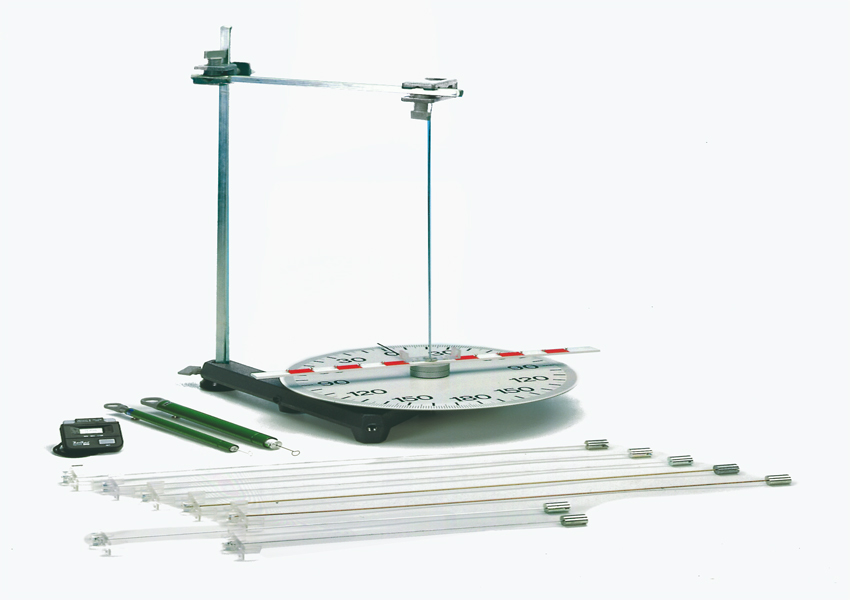Torsional vibrations and torsion modulus

Principle
Bars of various materials will be exciting into torsional vibration. The relationship between the vibration period and the geometrical dimensions of the bars will be derived and the specific shear modulus for the material determined.
Benefits
- The use of eight different rods out of different material and with several diameters increase the understanding of all correlations
- Simple experimental set-up with immediate and clear results
- Extremely solid construction
Support base DEMO
Support rod, stainless steel, l = 250 mm, d = 10 mm
Support rod, stainless steel, 750 mm
Torsion apparatus
Torsion rod, steel, l = 500 mm, d = 2 mm
Torsion rod, Al, l = 500 mm, d = 2 mm
Torsion rod, Al, l = 400 mm, d = 2 mm
Torsion rod, Al, l = 300 mm, d = 2 mm
Torsion rod, Al, l = 500 mm, d = 3 mm
Torsion rod, Al, l = 500 mm, d = 4 mm
Torsion rod, brass, l = 500 mm, d = 2 mm
Torsion rod, Cu, l = 500 mm, d = 2 mm
Spring balance,transparent, 1 N
Spring balance,transparent, 2 N
Stopwatch, digital, 1/100 s
Sliding weight
Right angle clamp expert
Tasks
- Static determination of the torsion modulus of a bar.
- Determination of the moment of inertia of the rod and weights fixed to the bar, from the vibration period.
- Determination of the dependence of the vibration period on the length and thickness of the bars.
- Determination of the shear modulus of steel, copper, aluminium and brass.
What you can learn about
- Shear modulus
- Angular velocity
- Torque
- Moment of inertia
- Angular restoring torque
- G-modulus
- Modulus of elasticity
